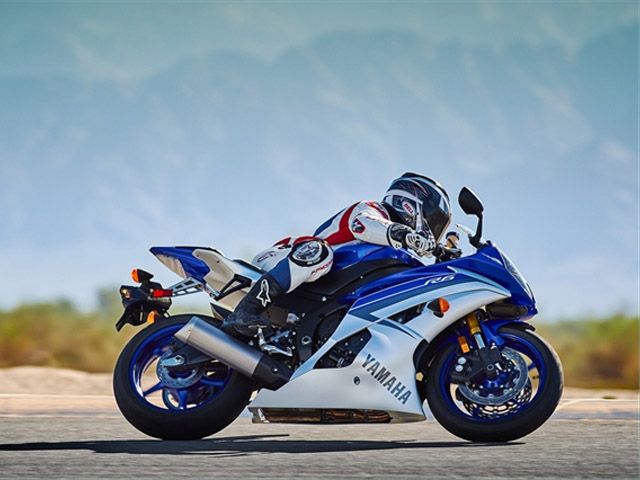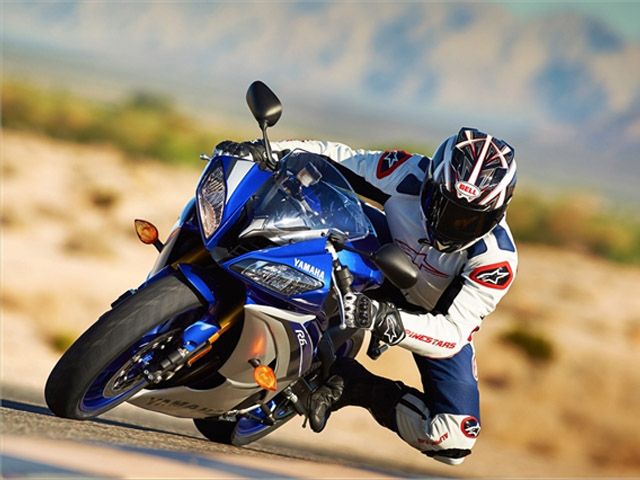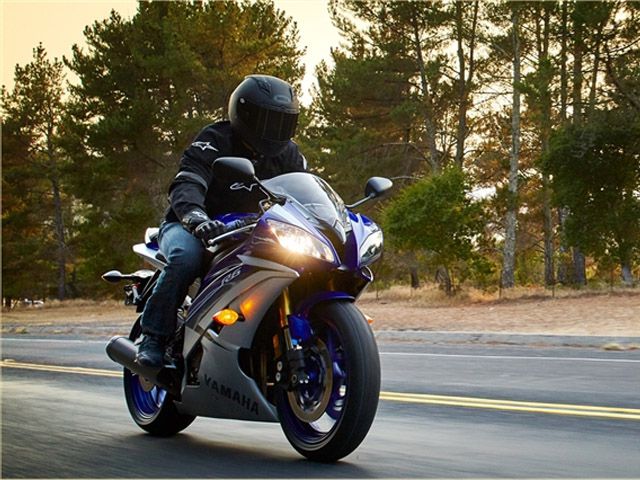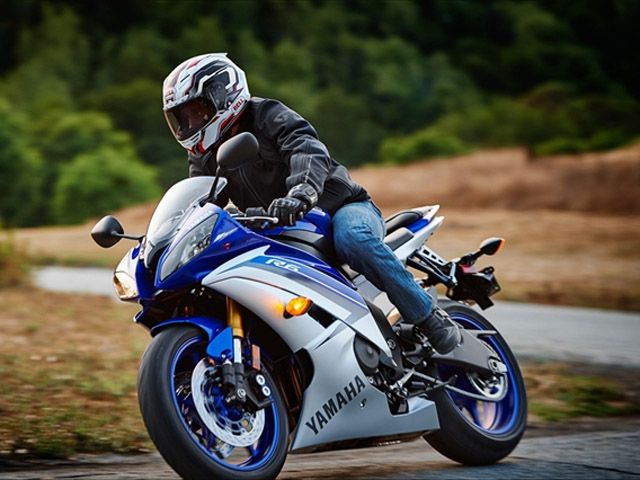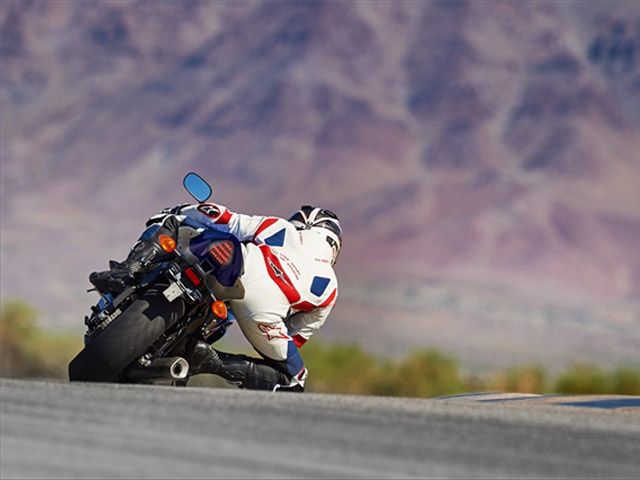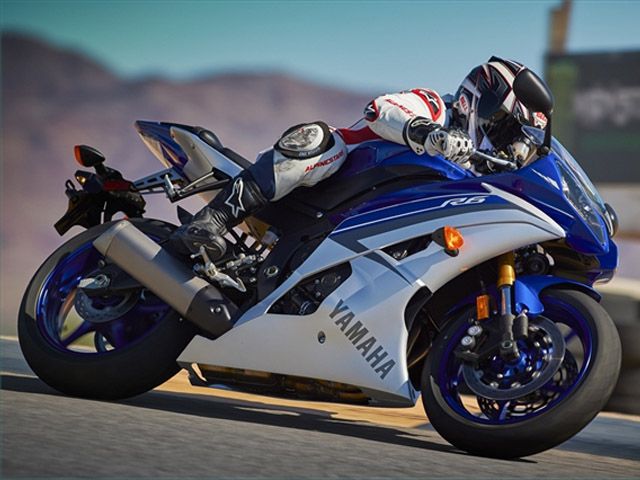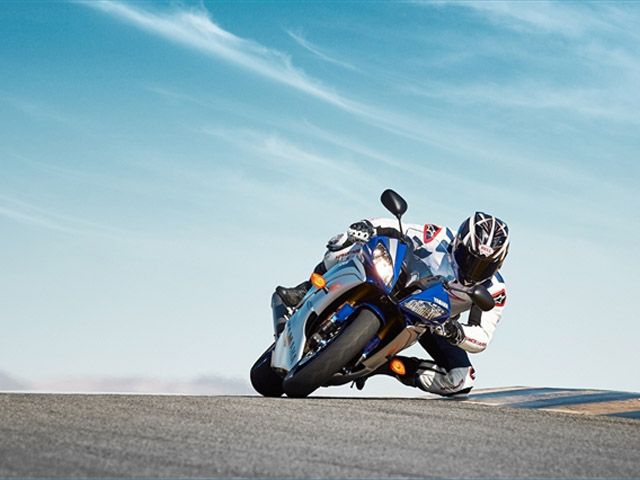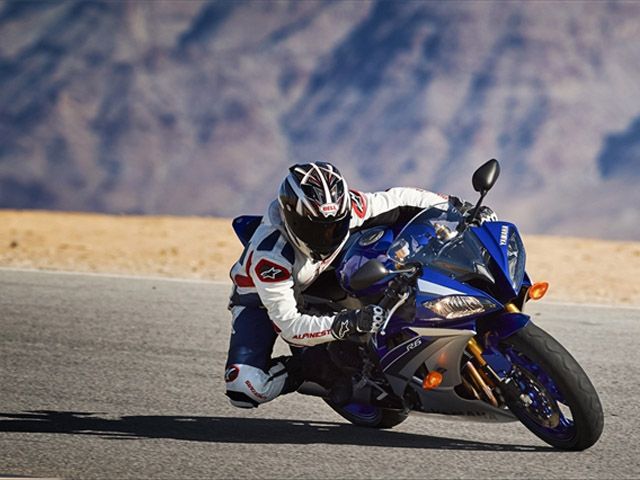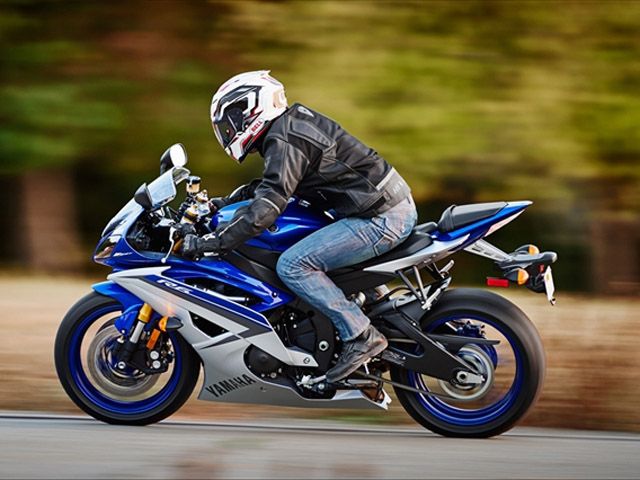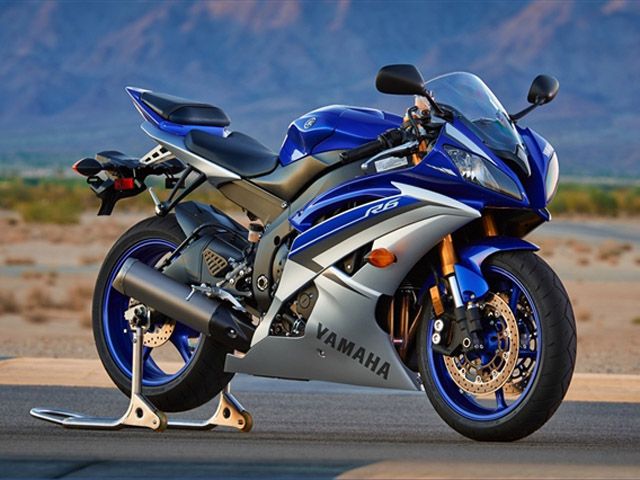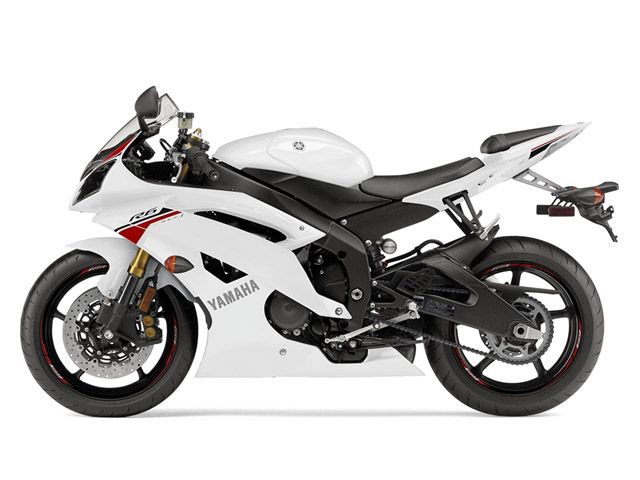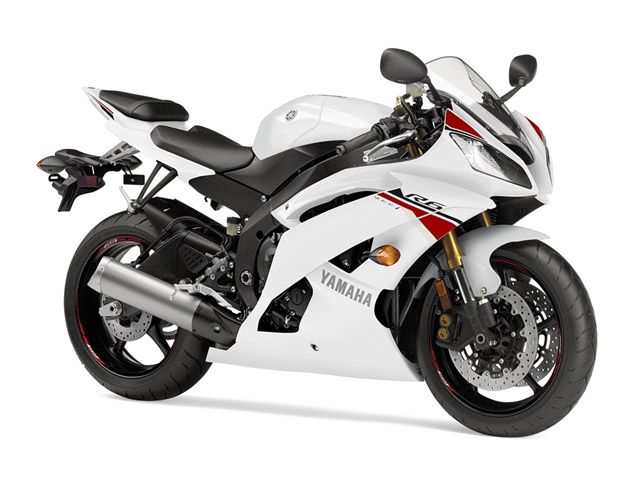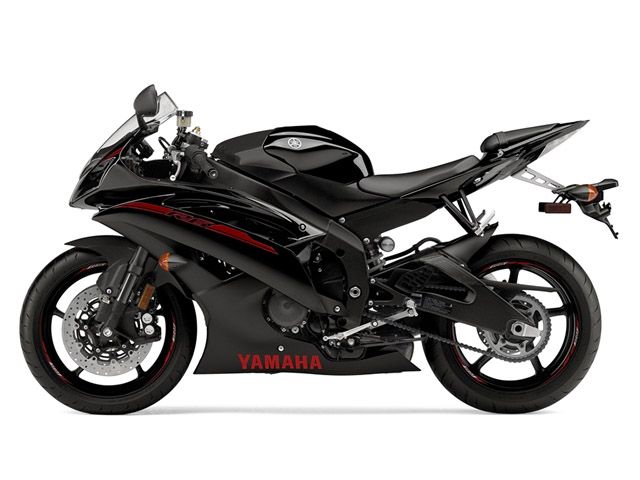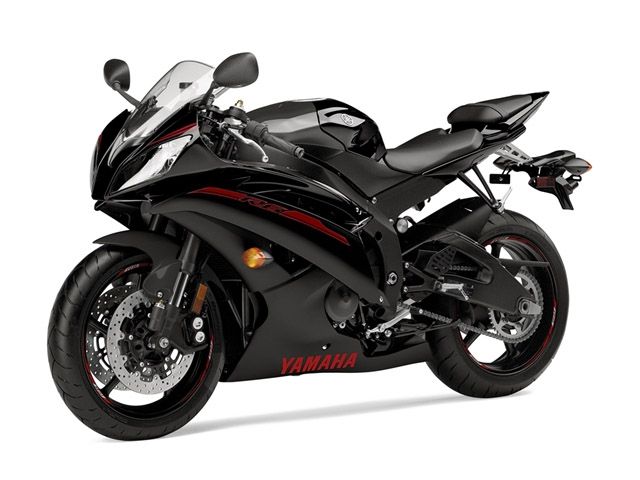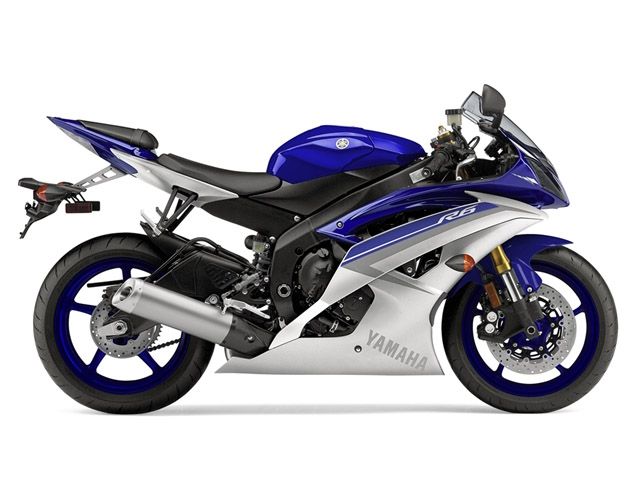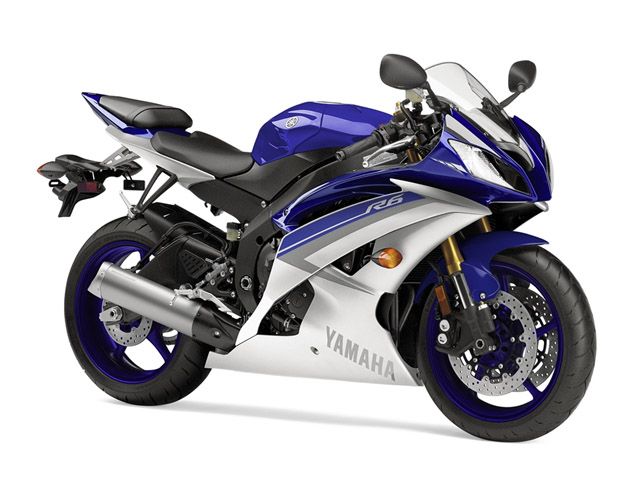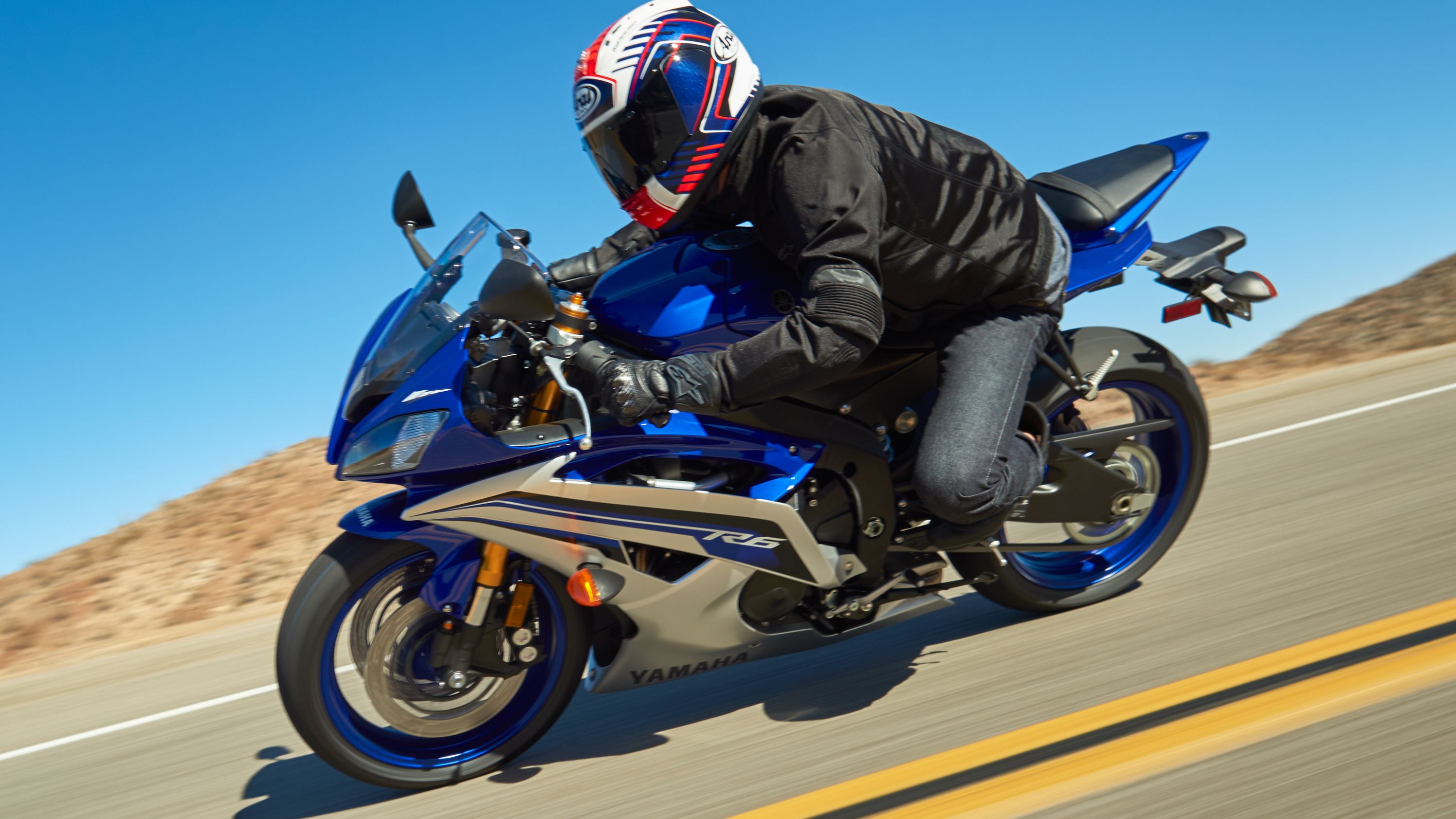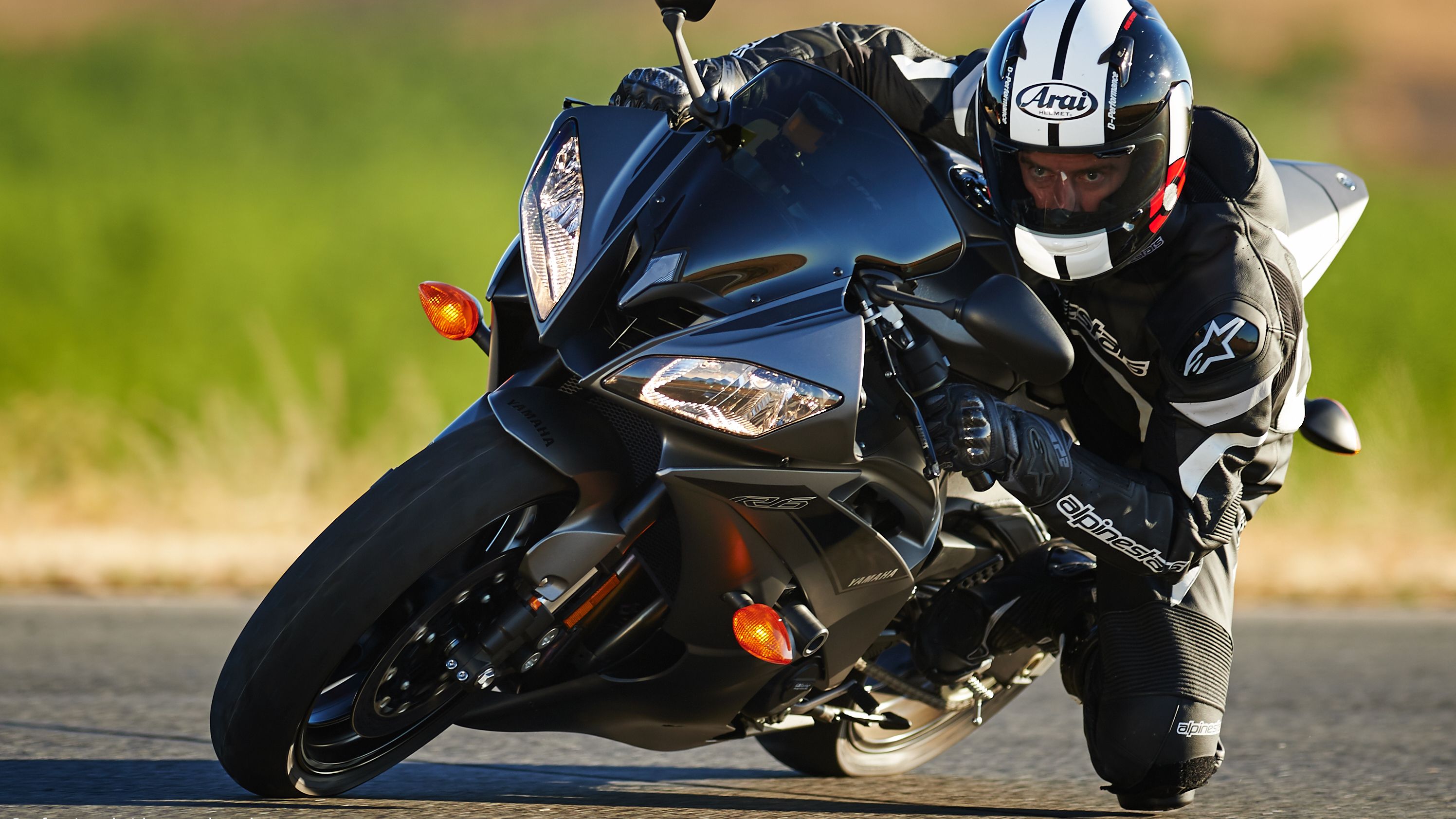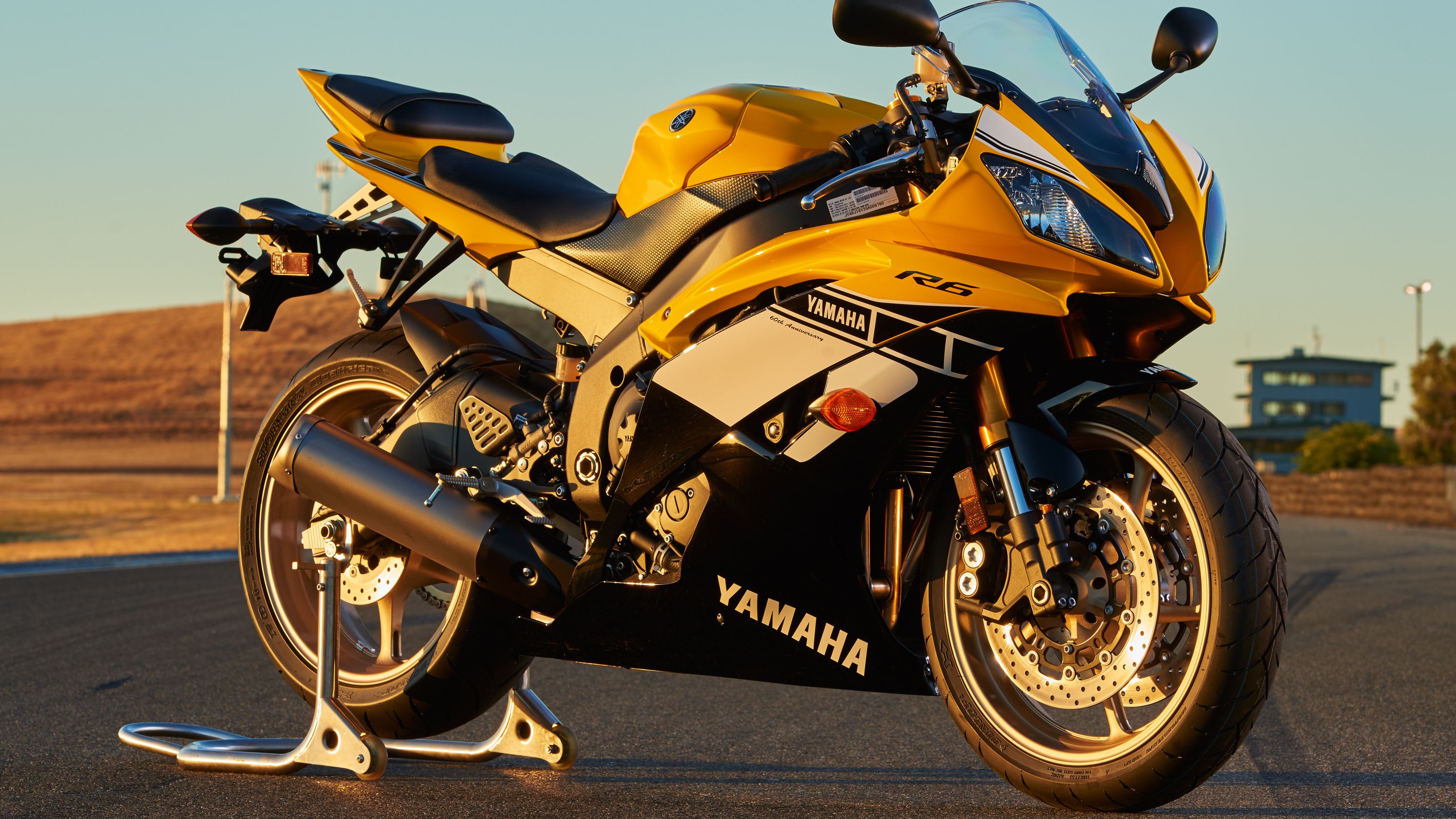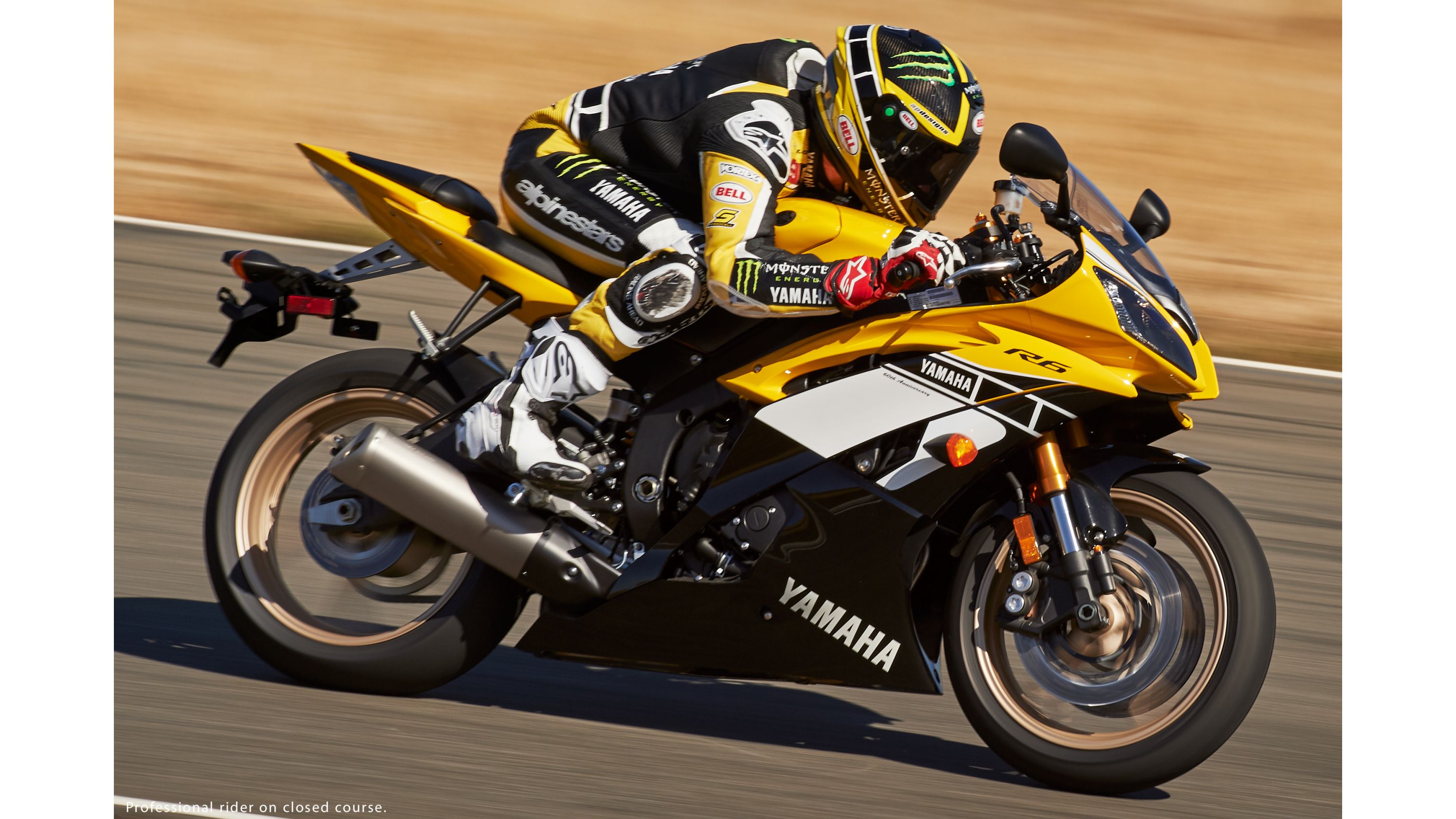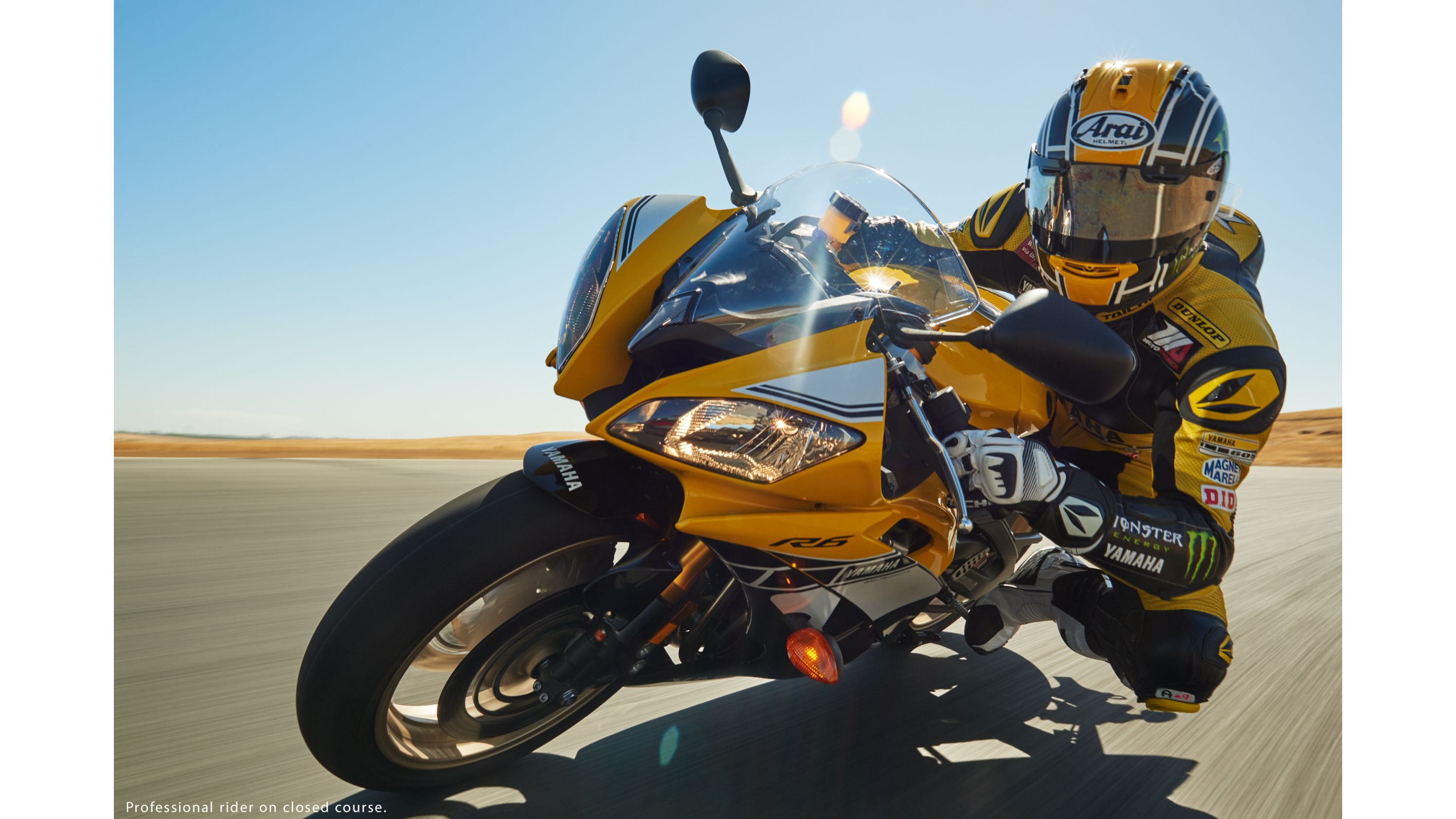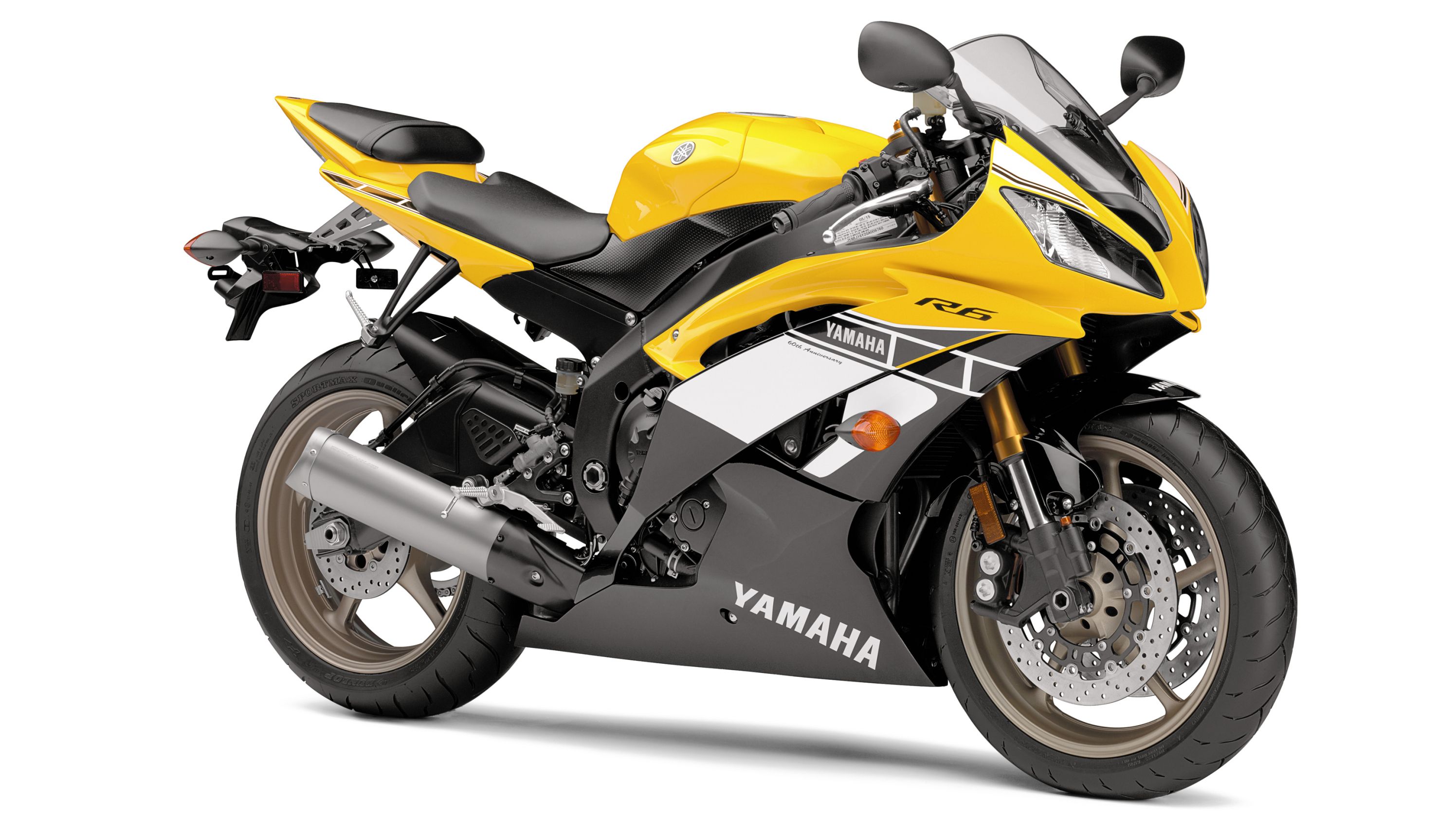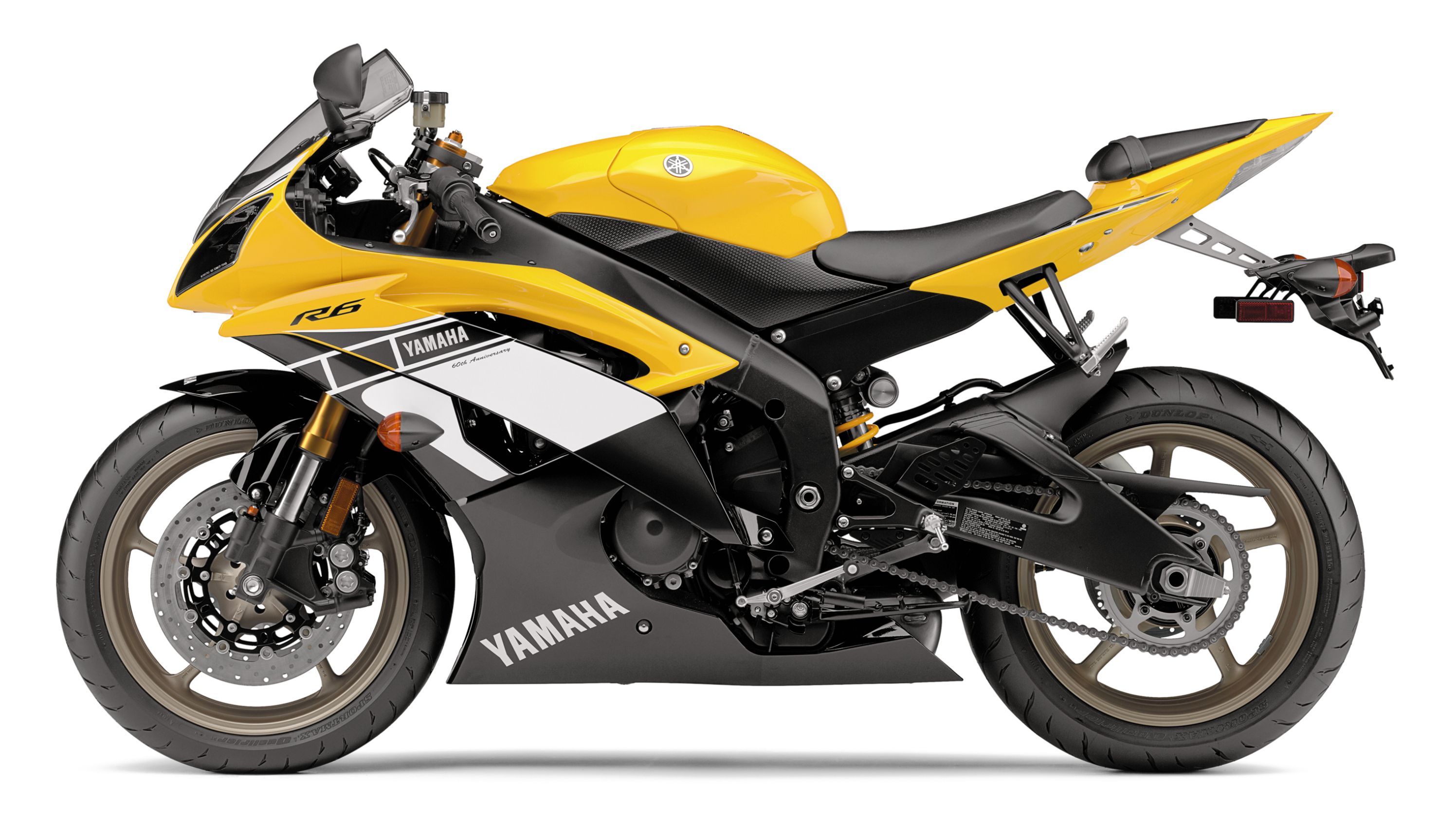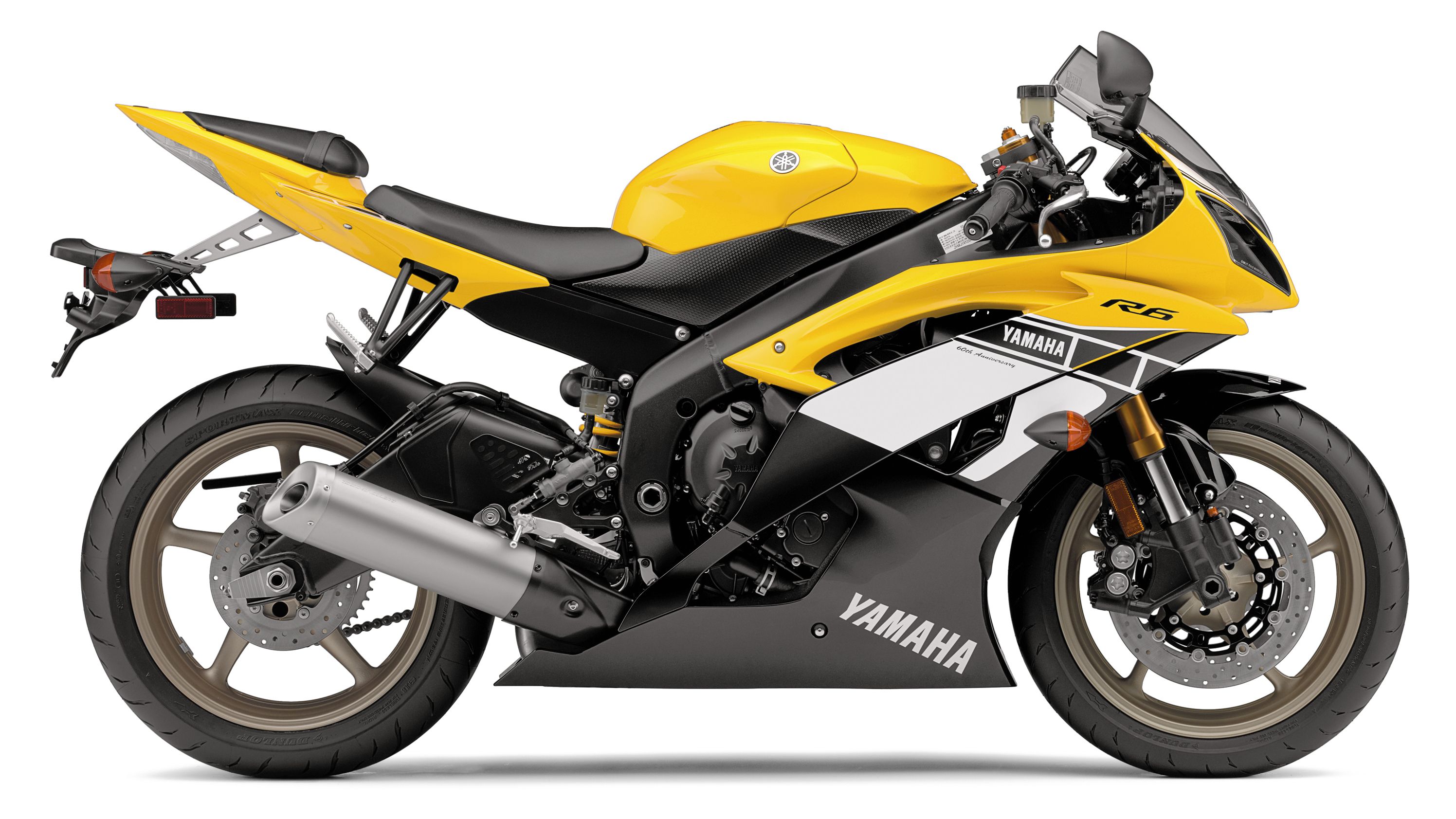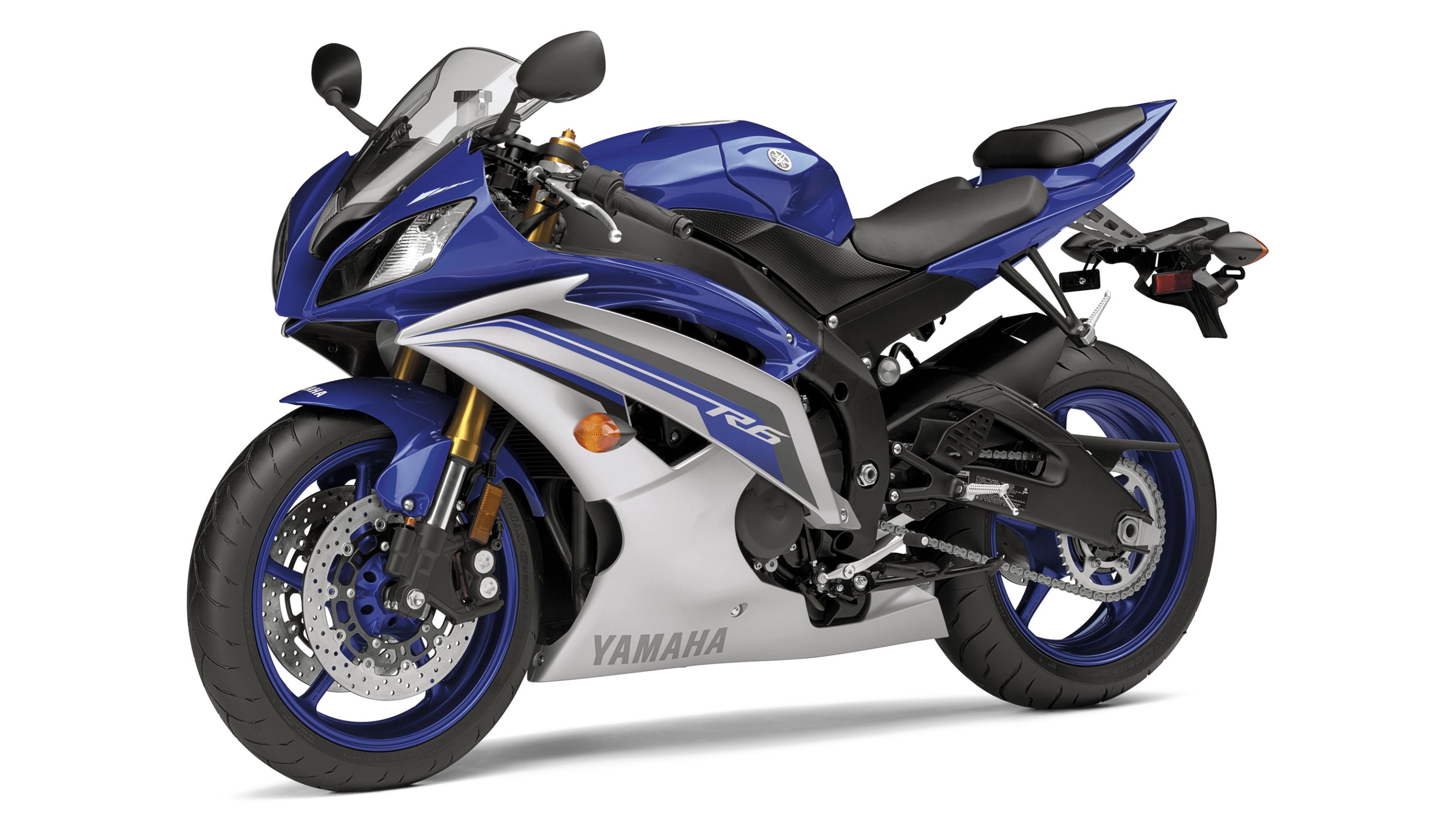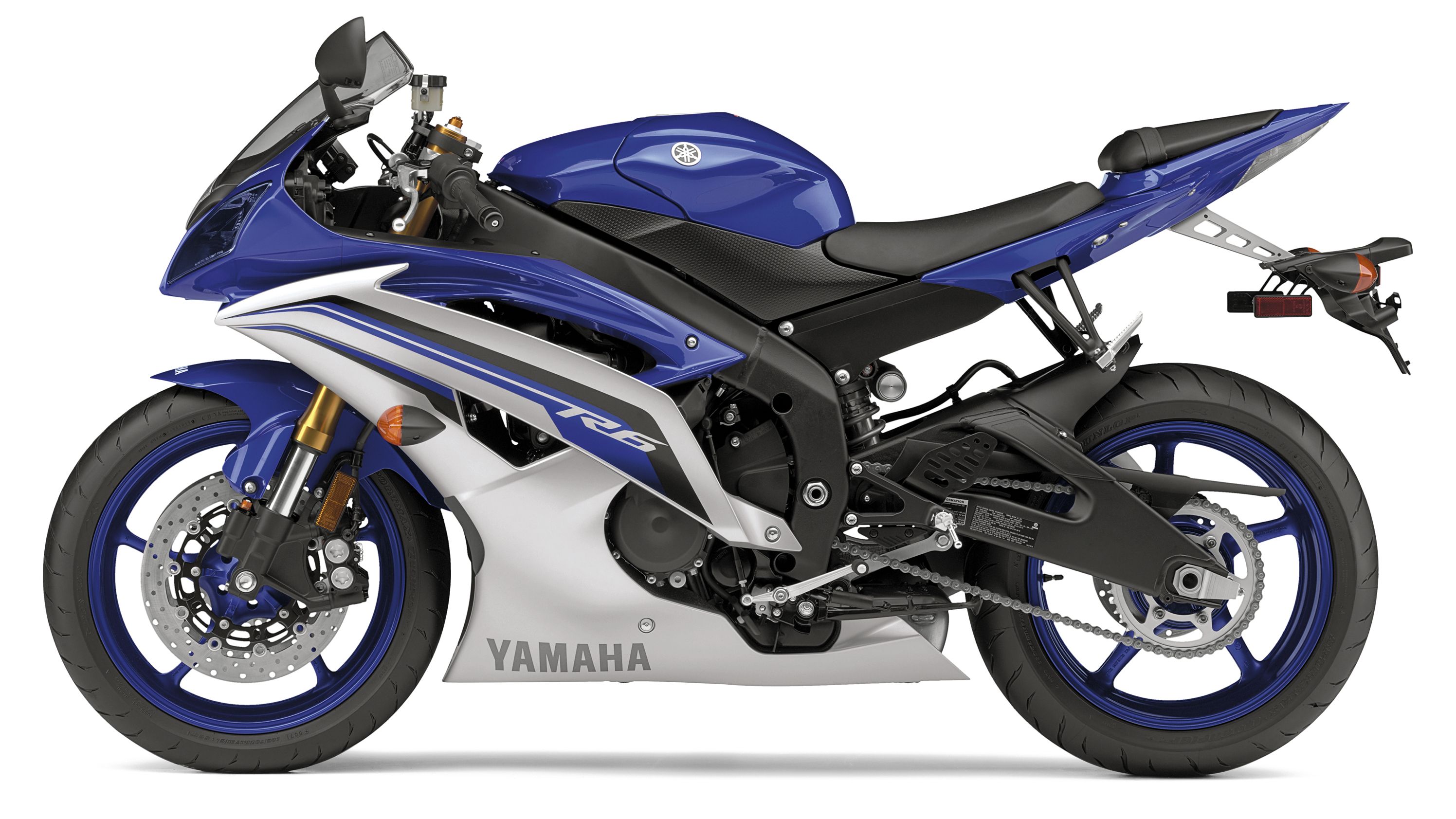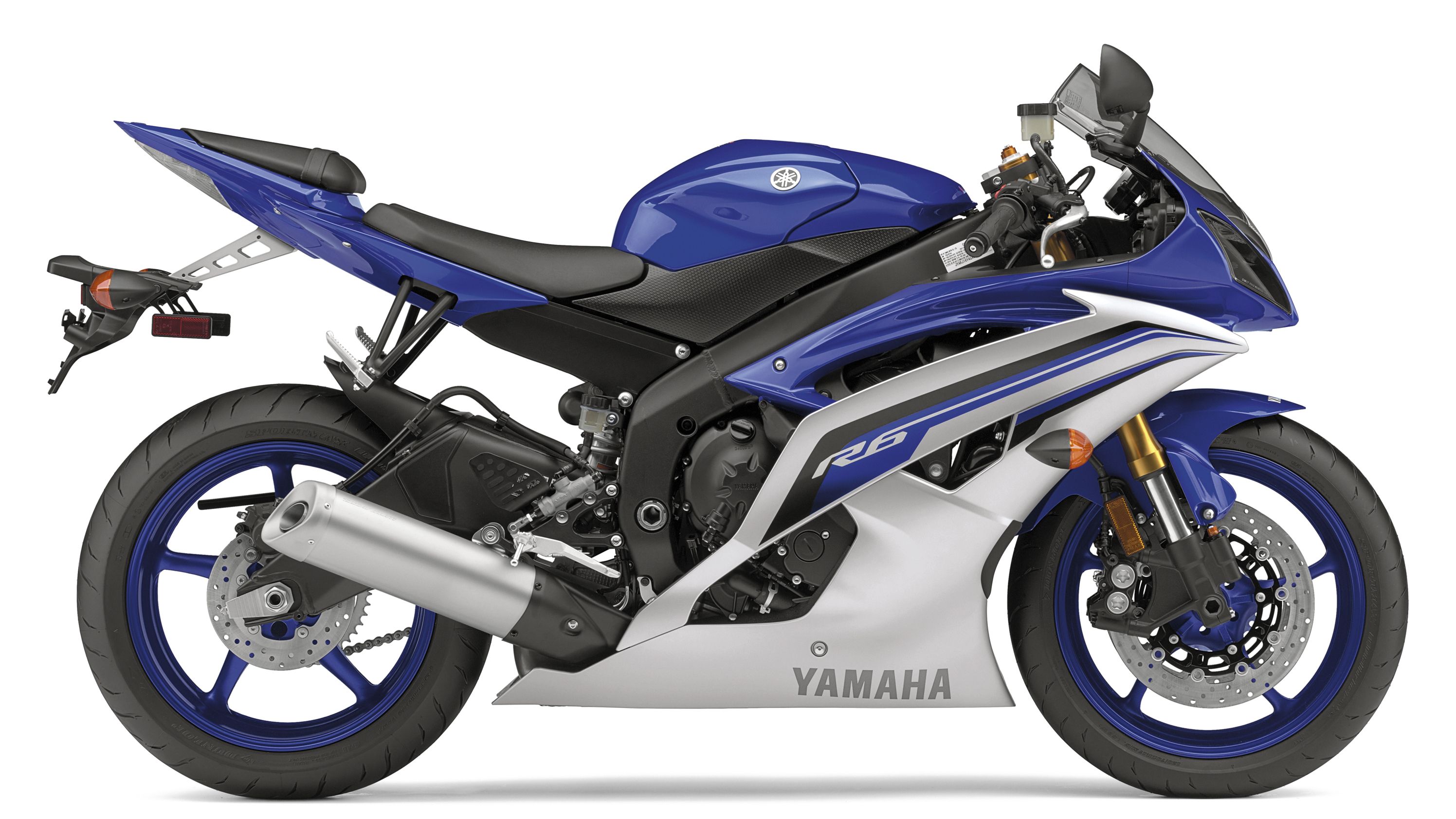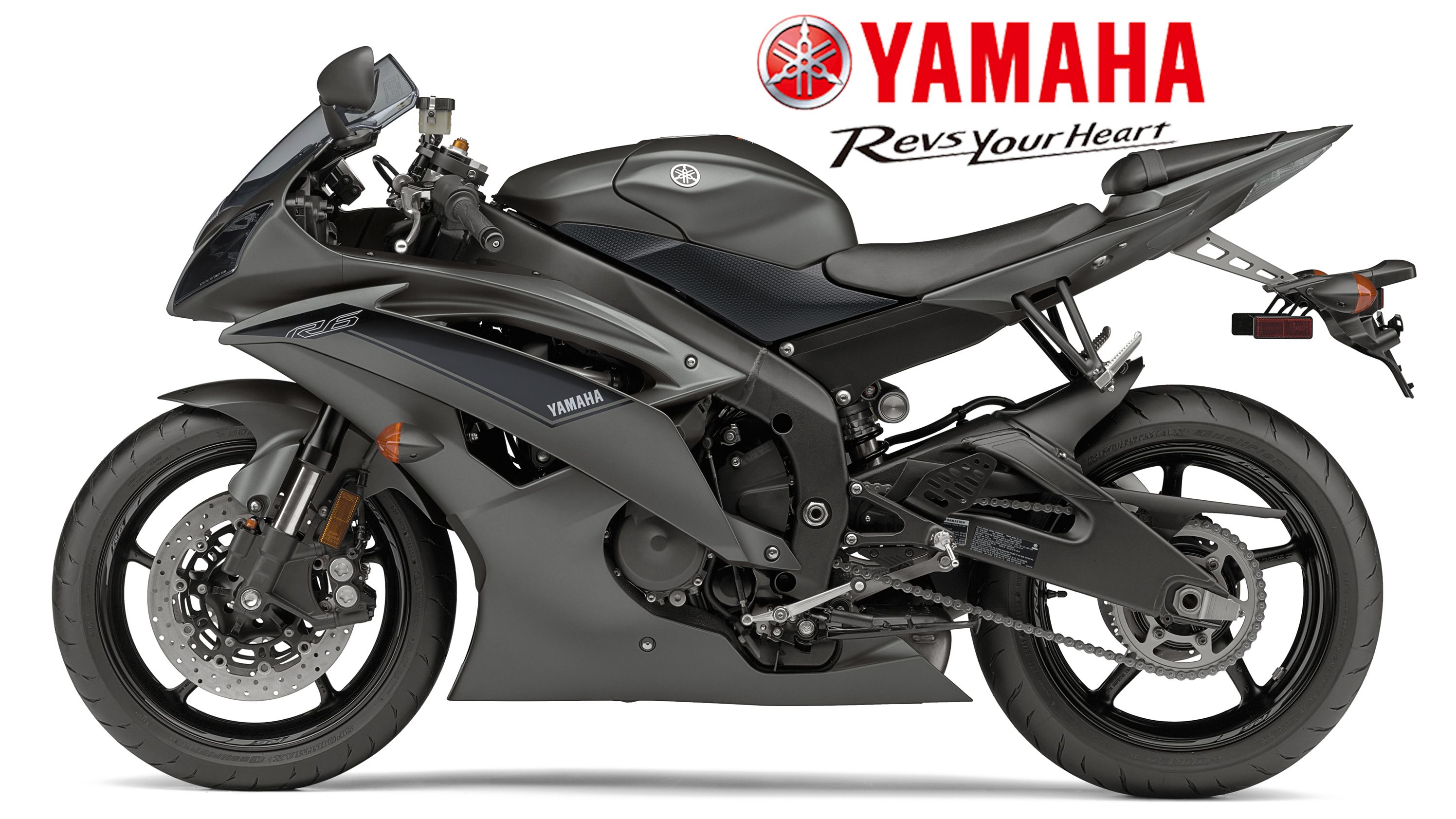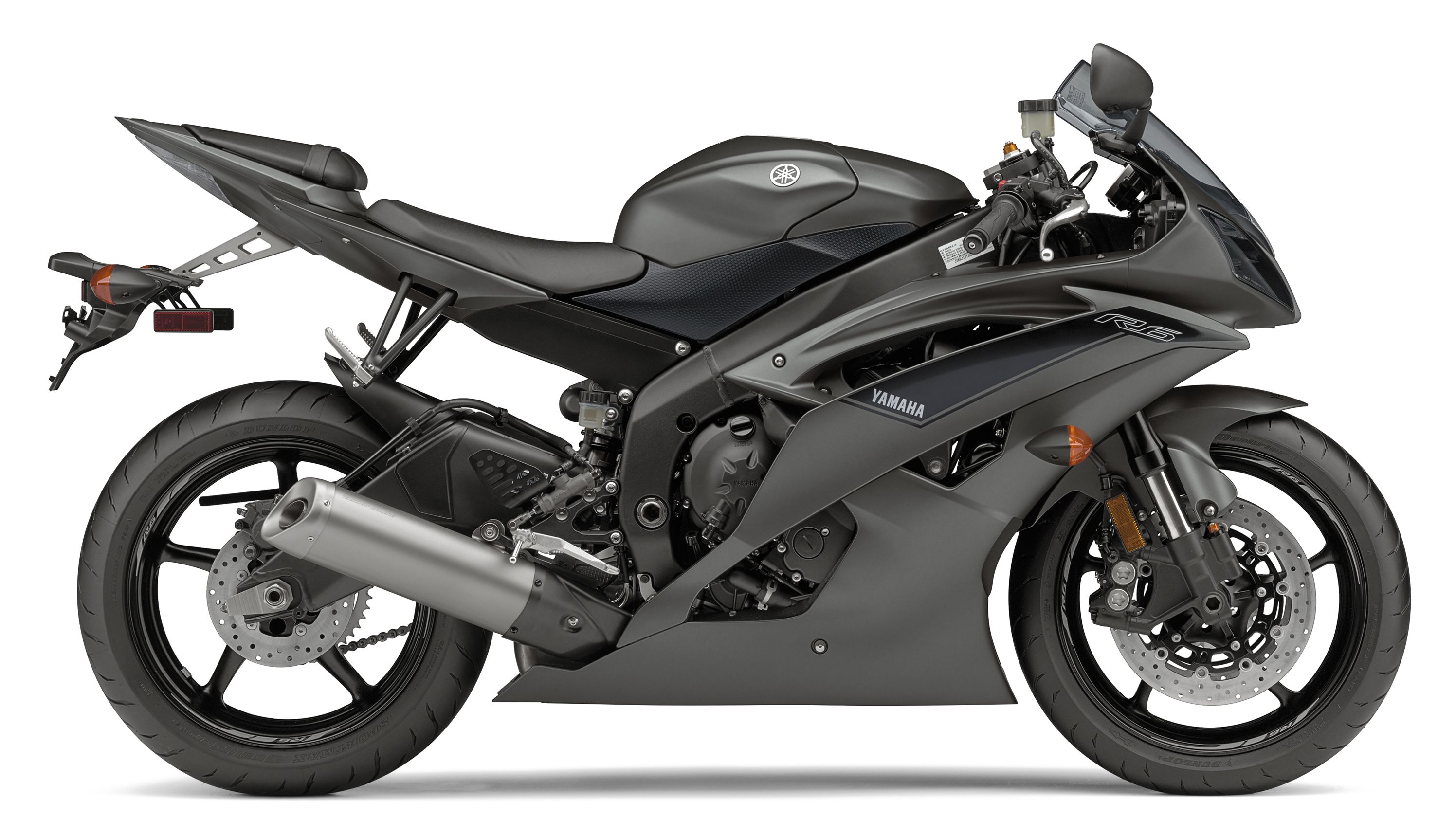Yamaha introduced us to its 600 cc supersport, the YZF-R6, way back in 1998. Fast forward to 2015 and we find the R6 still at it with even more of what made it popular in the first place. The Tuning Fork Company's 2015-16 R6 brings over 120 horsepower to the table with an edgy, racetrack power delivery that will definitely appeal to the fiery-eyed pegdraggers and race fans out there while keeping things in perspective for legal street use. If you're into the closed-circuit stuff, the R6 is good for that as well; evidenced by Supersport and Superstock championship runs that Yammy had in '15. Fans of the family will remember that the R6 ran the first production 600 cc engine to break the 100-horsepower mark back in '01, and Yamaha hasn't let up on the pressure to keep the R6 competitive and popular in an increasingly crowded street/race sector since.
Continue reading for my review of the Yamaha YZF-R6.
2015 - 2016 Yamaha YZF-R6
- Make: Array
- Model: 2015 - 2016 Yamaha YZF-R6
- Engine/Motor: Liquid-cooled inline 4-cylinder; DOHC, 16 titanium valves
- [do not use] Vehicle Model: Array
<3>Design}0}
h
All business and no fluff, the R6's style comes driven entirely by performance considerations. An angry-alien front fairing contains a pair of headlights separated by a vented cutaway located centrally beneath the clear speed screen. A fairly clean pair of mirrors rise from the top of the fairing, and bless Yammy for not trying to make them part of the aesthetic; they're simple yet classy, and one of the first things to go with the “race kit.” You thought it was race ready right off the shelf? Well, it very nearly is once you strike off all the drag-inducing street crap like the mirrors, turn-signals, plateholder etc.
Clip-on bars pull the rider into the doggy-style position over the 4.5-gallon fuel tank. While this is comfortable enough once you're tucked in at speed, it tends to put quite a bit of pressure on the wrists and shoulders and take some getting used to at around-town speeds.
The engine cowling leaves tantalizing glimpses of the powerplant while vents help to remove heat and re-integrate the cooling air into the slipstream while generating as little drag-inducing turbulence as possible. Unfortunately, the lower vents also blast your boots with waste heat, so that's something else you'll have to get used to.
At 33.5-inches tall, seat height is typical for the genre, which means it's in tiptoe country for most of us. Taller riders will be able to flatfoot it, but will feel the awkward, slow-speed ergonomics more keenly. In short; take a nice long test ride to make sure you can live with it, especially if you shop in the big-and-tall section.
Pillion accommodations are Spartan, to say the least, but there is enough there for a really motivated passenger to work with. The rear end is probably the only disappointment in the looks department though; the sprayguard/plateholder/ turn signal assembly makes it easy to strike all that superfluous stuff for track use, but the other 99-plus percent of owners who will never see a race course are stuck with that hideous appendage that is so last year. A tagholder hugger with subframe-mount turn signals would make a nicer finish for this otherwise spectacular specimen.
Chassis
Yamaha builds the R6 around an aluminum, Deltabox frame with a lightweight, magnesium subframe and aluminum swingarm. Not only does the GP-influenced frame come built for cornering stability with an anti-squat feature, but its lightweight construction helps the R6 meet its 417-pound wet weight. Not only that, but the factory took pains to keep what weight was left as centralized as possible for minimal rotational inertia and quicker flicks and reversals.
Cast, 17-inch rims make their contribution as well with a Z-rated 120/70 hoop up front and a 180/55 in back, all of which is typical for the genre. The five-spoke rims mount dual, 310 mm front discs with a 220 mm rear and radial-mount calipers to bind them. ABS? Forget about it. The brakes are vanilla as far as electronics goas they should be.
Suspension components front and rear come with adjustable high- and low-speed compression, rebound and preload, so they theoretically can be dialed in for any conditions or preferences. A pair of 41 mm, usd forks supports the front with a piggyback shock on the swingarm, and both ends are height-adjustable for yet another way to get everything dialed in just right.
All of this makes the R6 very good on the track, but there are issues on the street besides the wrist/shoulder pain and heat. As good as it is taking a corner with a knee, or even elbow, dragging the ground, slow-to-moderate speed turns are a little shaky and unsure feeling, and that's yet another thing you'll have to get used to. You can take the bike out of the race, but you can't take the race out of the bike, and so the R6 has a bit of an edginess that you just don't get from a run-of-the-mill bike. Good news if you're into that sort of thing, but some might find it a bit much.
Drivetrain
In case you haven't noticed, this isn't just another race tribute bike, and the fact that it “just” has a 600 in it (599 cc to be absolutely accurate) doesn't make it suitable for entry-level/young riders. Quite the contrary, in fact. The water-cooled, inline-four mill churns out 42.2 pound-feet at 11,500 rpm, and power output maxes out at the 14,500 rpm redline with 122 horsepower, way too much for the inexperienced to safely handle.
Bore and stroke measure out at 67 mm x 42.5 mm, respectively, for a blistering 13.1-to-1 compression, and the cylinders sport Yammy's ceramic-composite cylinder coating for low friction with improved heat transfer. A ride-by-wire throttle controls the induction through the Yamaha Chip Controlled Throttle system that, in turn, manages the dual-injector delivery.
The factory took steps to broaden the powerband with the variable-length intake system, and it did seem to do so, though mainly toward the bottom end. Like the handling, the throttle response has a bit of an edge to it that some will love, and some won't. A six-speed transmixxer crunches the ratios for a top speed of around 160 mph with a slipper clutch to prevent rear-wheel hop and excessive backtorque on hard downshifts.
Pricing
The '16 models come in Matte Gray for $10,990, a blue and silver Team Yamaha livery for $11,190 and a 60th Anniversary Yellow package for $14,490. The '15 prices were the same sans the anniversary model.
Competitors
At 600 cc, the R6 is right in the midrange bracket where there is no shortage of competition, so I didn't have to go far to find what I was looking for. The Honda CBR600RR fits the bill quite nicely, and like the R6, is a track-tested machine, so I'm gonna call 'em both apples and get to it.
Yamaha put a lot of character in its design where Honda maintains a rather dignified look with some subtle curves and little of the blockiness that seems to come out in their designs. Beyond that, these two show all the same breed characteristics from the vented, three-quarter cowl and clear bubble speedscreen to the tail-up subframe and vestigial pillion pad. A narrow section at the junction of tank and saddle leave both feeling slim between the legs, but if you want to use it as an around-town commuter, it's safe to say that both rides could probably benefit from a better seat.
Honda's chassis brings a few nice features to the table. First up, the Honda Electronic Steering Damper delivers variable, speed-dependent steering stiffness for track and street, and Honda's Combined ABS is an available option that makes the CBR more commute-friendly, though it's still not a beginner's bike by any means. The stems on the CBR come with spring preload as well as compression- and rebound-damping adjustments all around for the usual trifeta, but lack the dual-speed feature of the R6.
The CBR runs a water-cooled, 599 cc inline four-banger, just like the R6. Compression is a little cooler at only 12.2-to-1, but that's still premium pump territory. Honda's mill lacks a little of the spit-and-polish of the Yammy product, and it shows up at the dyno; the CBR cranks out another 2.4 pounds o' grunt with a total of 44.8 pound-feet, but horsepower falls off with only 100.6 ponies versus 122 out of the R6. It's a tradeoff that sees Honda at the short end of the stick.
Yamaha scores again at the checkout with a $10,990 starting price-- half-a-grand less than the base CBR600RR. Honestly, price isn't the deal maker here. The real question is, how race-tastic do you really need to be?
He Said
“Great bike, but dangerous in that the price isn't high enough to act as a firewall to keep newbie riders off them. Granted, it's not like throwing a leg over a literbike, but if you don't think 600 cc is enough to get in trouble in a hurry, I got some land for sale in Florida, and it only gets wet twice a day.”
She Said
My wife and fellow motorcycle writer, Allyn Hinton,says, "Not for the inexperienced, I think. Folks will argue that if you have any self-control at all, you can keep the bike under 8k rpm and treat it like a 250 cc or 300 cc bike. Then as your skills increase, you have more bike to play with without having to go buy another bike. That's fine if you actually do that. I'm afraid of the new, inexperienced rider who thinks he can handle going fast, but doesn't realize how the feel of the bike changes when you start slowing down, and he quickly finds out that he's in over his head. That said, the 2016 doesn't rev up as high as previous model years. It redlines at 16,500 rpm, so I don't know what that means as far as what changes were made, but I am in favor of a lower redline. I like that the power kicks in sooner than previously, too."
Specifications
|
Engine: |
|
|
Engine Type: |
599cc liquid-cooled DOHC inline 4-cylinder; 16 titanium valves |
|
Bore x Stroke: |
67.0mm x 42.5mm |
|
Compression Ratio: |
13.1:1 |
|
Fuel Delivery: |
Yamaha Fuel Injection with YCC-T and YCC-I |
|
Ignition: |
TCI: Transistor Controlled Ignition |
|
Transmission: |
6-speed w/multiplate slipper clutch |
|
Final Drive: |
O-ring chain |
|
Chassis: |
|
|
Suspension / Front: |
41mm inverted fork, 4-way adjustable; 4.5-in travel |
|
Suspension / Rear: |
Single shock, 4-way adjustable; 4.7-in travel |
|
Brakes / Front: |
Dual 310mm hydraulic disc |
|
Brakes / Rear: |
220mm hydraulic disc |
|
Tires / Front: |
120/70ZR17 |
|
Tires / Rear: |
180/55ZR17 |
|
Dimensions: |
|
|
L x W x H: |
80.3 in x 27.8 in x 43.1 in |
|
Seat Height: |
33.5 in |
|
Wheelbase: |
54.1 in |
|
Rake (Caster Angle): |
24.0° |
|
Trail: |
3.8 in |
|
Maximum Ground Clearance: |
5.1 in |
|
Fuel Capacity: |
4.5 gal |
|
Fuel Economy: |
40 mpg |
|
Wet Weight: |
417 lb |
|
Details: |
|
|
Warranty: |
1 Year (Limited Factory Warranty) |
|
Colors: |
|
|
2015: |
Team Yamaha Blue/Matte Silver , Raven, Pearl White |
|
2016: |
Team Yamaha Blue/Matte Silver, Matte Gray, 60th Anniversary Yellow |
|
Price: |
|
|
2015: |
$10,990, Team Yamaha Blue/Matte Silver - $11,190 |
|
2016: |
Matte Gray - $10,990, Team Yamaha Blue/Matte Silver - $11,190, 60th Anniversary Yellow - $11,490 |


